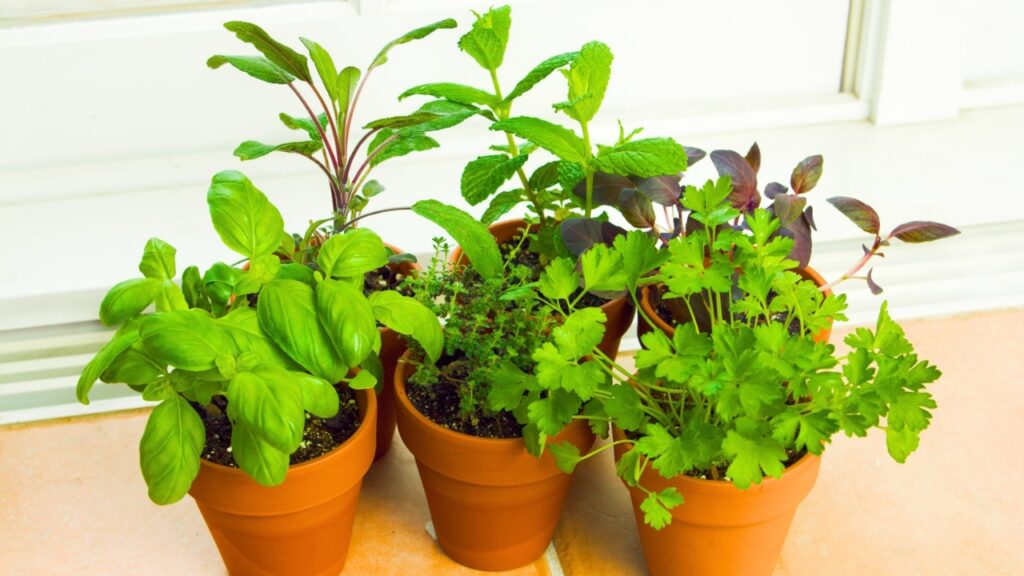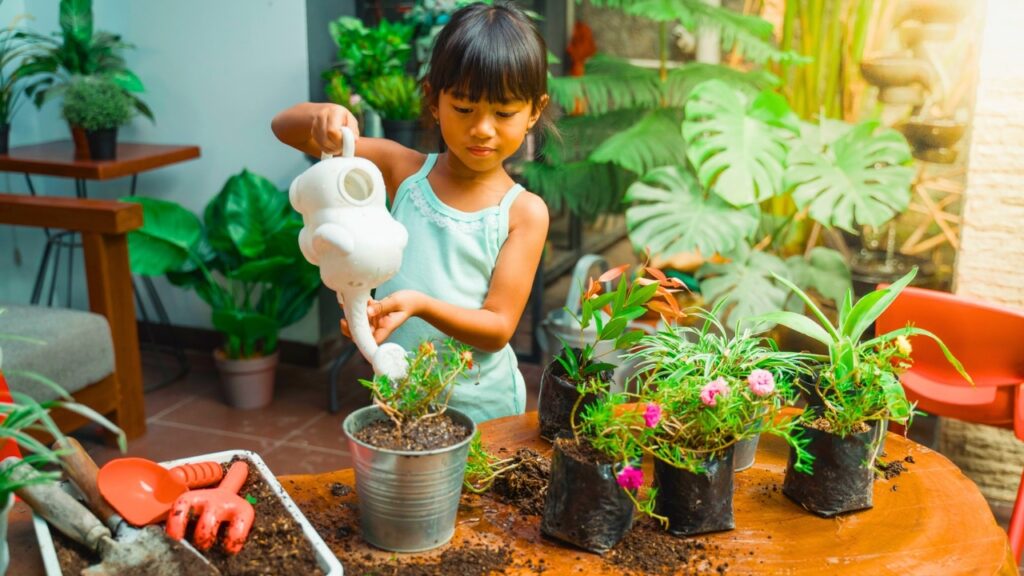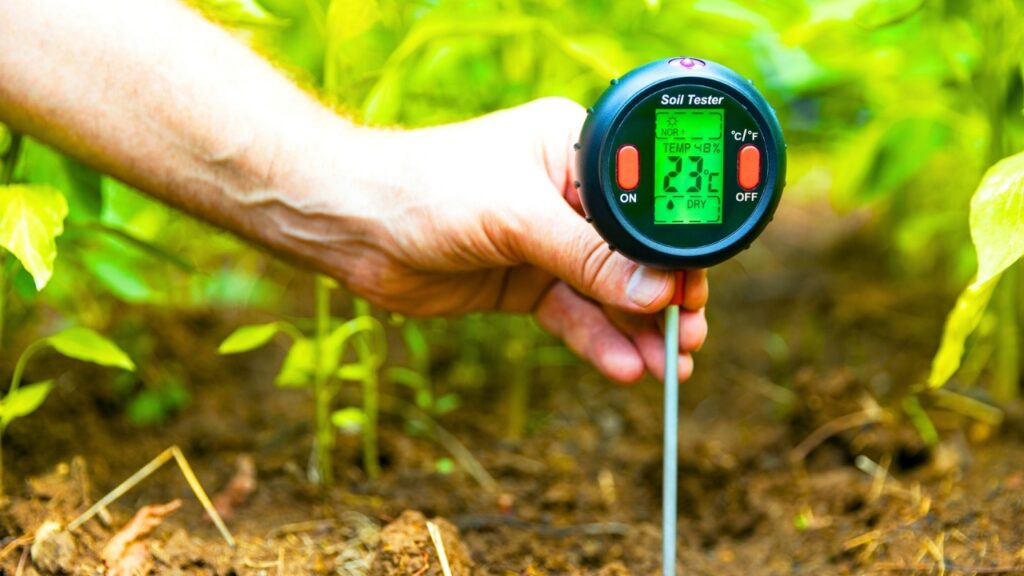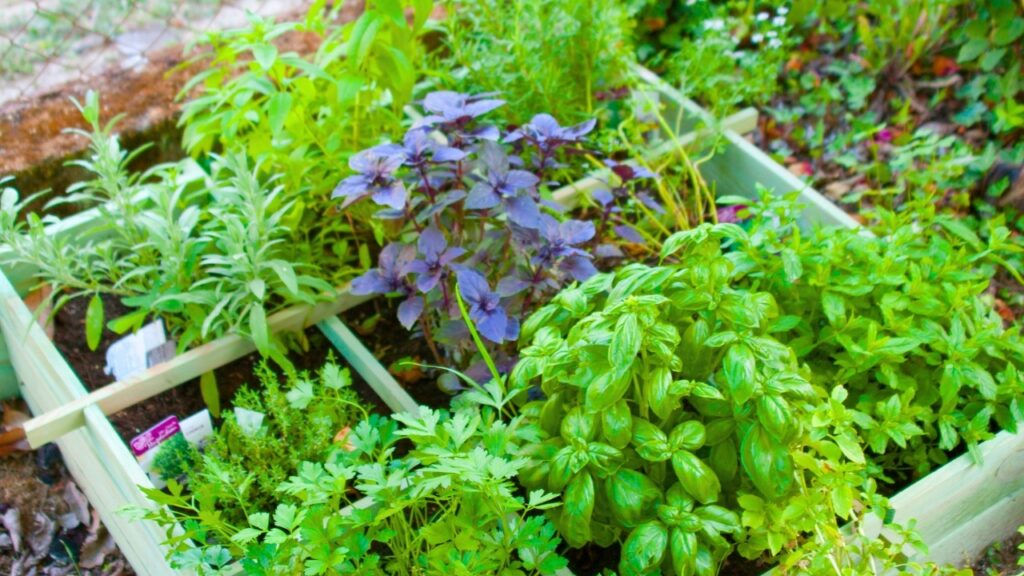Does your mint not look like a mint? Does your thyme need more time? Does your parsley look weak? We’ll show you how to say “None of the above!”
It’s a great idea to grow your own herb garden so that you can quickly use the plants for food and decoration. But do you want to know why your herb garden isn’t doing well? Read our tips on how to grow an indoor herb garden to improve your indoor plant game.
Most plants don’t need much care, but like people, they all have their own tastes. Luckily, there are some rules that work for all herbs that are grown indoors. Learn how to take care of an indoor herb garden so that you can enjoy fresh herbs and home-cooked food all year long.
1. Choose the Right Plants

You can grow most herbs indoors, but easy-to-care-for herbs like basil, chives, mint, oregano, parsley, rosemary, and thyme tend to do best.
Starting herbs from seed or cuttings is easy.
A cutting is a part of a plant that has been cut at the node and soaked in water until new roots grow. You might find it easier and faster to start your home garden with seedlings from a garden center, though.
2. Water Slowly And Thoroughly, Not Too Often

When you water herbs inside, it’s important to let the pots dry out a bit between watering them. Use your finger to check the dirt. Based on the size of the pot, the dirt should be dry about 2 inches below the top. If it’s not, it’s time to water.
It’s not true that this is too dry and will hurt your flower plants. Since the soil dries out fastest at the top, the soil at the bottom of the pot is likely still quite wet even though the top is dry. The roots should go deep into the ground to look for water. This helps the roots grow strong and healthy.
Another useful tip is to slowly water your flowers. The water might not soak into the soil if you water too fast. It could just run through the pot and out the drainage holes.
Be sure to stick to a plan. Depending on how wet your home is, you should only do it two to three times a week. You shouldn’t have to water your herbs every day. If you notice that you need to water every day, this could mean one of several things:
The green plant doesn’t fit in the pot. Take the plant off the ground and look at the roots. Do the roots fill up the whole pot? This is a clear sign that you need to get a bigger pot.
There might not be enough air in your home. In the same spot as your home garden, put a tray with little rocks in it.
Add just enough water to cover them. It will dry out around your plants, giving them the extra water they need to stay healthy.
It’s too hot. Sunlight can dry out pots more quickly. If your flowers look like they’re dropping and getting too dry, move them away from the window a bit.
You might want to buy a soil wetness meter if you have trouble keeping your herbs at the right level of water and soil. With these useful tools, you can see how much water the soil has stored and know when it’s time to water.
3. Temperature Ought To Be Around 70 Degrees

Another important thing to think about when growing herbs indoors is the temperature. Between 65 and 70 degrees is the best setting for most herbs, and most homes are a good place to keep them.
If you want to slow down the growth of your flower plants, you can sometimes lower the temperature even more, to between 60 and 65 degrees. Some plants need a time when they don’t grow. You can store plants in a cooler area if you are keeping them inside over the winter.
When putting herbs right next to the window, be careful. When the sun hits the glass and heats it up, the leaves could get burned if they touch it.
It might get too cold right next to the window in homes with drafty windows. Adding padding to your windows (even a towel between the window and screen will work) is an easy way to fix this problem.
Basil is the plant that needs to be at the right temperature the most. Basil likes it warm and would rather stay at 75 degrees all the time if it’s possible. You will know right away if basil gets too cold. Within 24 hours, the leaves will begin to lose their color and wilt.
4. Allow Drainage

For a herb garden to work, you need to pick the right pot for each plant. While it’s important to buy a pot that you like the look of, it’s even more important to make sure that the pot has good ventilation.
What does that mean? If a pot has drainage, it means that the bottom has one or more holes that let water flow through.
To water your plants the right way, put them in the sink, wet the dirt, and let the water drain. This keeps the roots from sitting at the bottom of the pot, which can cause root rot, while still giving the roots water. Once you’ve watered your herbs, put them on a saucer to keep the shelf from getting any more wet.
5. Maintain Proper Lighting

Sunlight can be tricky for herbs because some need more than others, some are picky about how much light they get, and some don’t care. Most plants need full sun, which means they need at least six hours of direct sunlight every day. However, many herbs do fine with less than six hours and even prefer it.
If you want to put a herb garden on the windowsill of a kitchen window, pick herbs that do well in that spot because of the light:
Windows that face south get full sun.
Windows that face east or west provide some shade.
Windows that face north provide mostly shade.
If the spot where you want to put your indoor herb garden doesn’t get much or any sunshine, you might want to set up a grow light or some other kind of artificial lighting made just for plants. Even if your garden is next to a window, your herbs might do better with a little extra light if it faces north, especially in the winter.
6. Keep Away From Artificial Air

Put your flowers somewhere near the sun, but not near heat sources. Dry air is made by air that is heated by vents, space heaters, radiators, or cooking appliances. This fake dry air can quickly dry out your hard-won flowers and take water from a plant’s leaves.
In the same way, keep your greens away from cold air coming from an AC unit in the summer. In the winter, make sure that your herbs don’t get windy air from outside that comes in through open doors or windows that leak.
7. Cut Back Your Herbs Often

Just like people, indoor flowers need to be trimmed every once in a while, and it’s not just for looks.
Herbs grow faster and better when they are pruned, and by picking the leaves, you keep the plant in its growth stage longer. That means you can enjoy more fresh veggies! You only need a normal pair of cooking shears most of the time.
8. Start With Plants Instead of Seeds

We like how excited you are, but you don’t have to start with seeds to grow flowers. Instead, buy a small plant with roots that are already there. That way, you can focus on growing and using your flowers while the roots grow.
Are you not sure which plants to buy?
To begin, pick herbs that are simple to grow indoors. Second, read the care label to make sure you have the right conditions (most notably sunshine) for that herb to grow well. Third, pick something you like to cook with: You shouldn’t grow cilantro if you don’t like it.
9. Grow Each Herb In Its Own Pot

If you want to grow herbs indoors, don’t put more than one type in the same pot. If you are raising herbs outside or in a self-contained light system like the Aerogarden, this is a good idea.
But if things aren’t just right, it might be harder to make the right conditions for more than one herb in the same pot. When growing indoors, you have the most options when you plant herbs in different pots.
You might have to turn your herbs around to get more airflow or change how much light they get. Herbs that are kept inside, like fruit flies, may need to be washed in the sink if you forget to water them. Herbs grow better indoors when they are in their own pots. This lets you take care of the needs of each plant separately.
For now, those cute little pots with multiple herbs that you can find at grocery stores or garden centers will work. But if you want to grow herbs indoors for a long time, you might want to give each one its own pot.
10. Choose The Best Indoor Herb Potting Mix or Soil

The indoor herb garden needs soil mix that lets more water drain away. Before you buy potting mix, check the label to make sure it’s good for plants that will be grown indoors.
You can add perlite or vermiculite to a potting mix that seems too heavy. More water will be held in by the vermiculite if you live in a very dry area.
Have you ever thought about why some bags are called potting soil and others are called potting mix?
There is a difference between them. The potting mixes are less heavy and will have an aerator in them, like the little white stones you see in the mix. This is what we need to grow herbs inside in pots.
When you plant a garden indoors, never use dirt from the ground. It’s too small to be good for growing plants indoors, and the roots won’t be able to breathe. Also, the dirt outside has tiny bugs and parasites that you don’t want to bring inside.
Coconut peat or peat moss, perlite, and loose sand can be mixed together to make your own potting mix. This is a cheaper alternative to buying mixes already made. If you make your own indoor potting mix, you can change the ingredients to make them work better for the herbs you want to grow.
Herbs that like water, like mint, like a little extra peat. And greens from the Mediterranean like it dry, so you can add more sand.
11. Apply Seaweed or Fish Fertilizer to Herbs

Soil that is either made from seaweed extract or fish emulsion is best for plants. Both have more nitrogen in them, which helps them grow strong leaves. You should feed your plants once a week when they are actively growing, like in the summer. This can be cut down to once a month during times of slower growth.
Some people who grow herbs like to mix a weak solution with their water every time they water. If you want to do this, add the fertilizer at a quarter of the amount that it says on the package. Here are two good choices that work in this case:
Sea Magic Dry Soluble Seaweed Extract has micronutrients and amino acids that help plants stay healthy and immune to disease.
Fertilizer from Neptune Harvest is a mix of fish and seaweed that comes in an easy-to-use box.
Read our article All About Seaweed Fertilizer to learn more about the benefits of using liquid seaweed on your flowers and the best way to do it.
12. When Ready, Transplant

Herb plants inside won’t last forever. The good and bad news is that your herbs will finally need more space because they will have grown too big for their pots. Roots should come out of the drainage holes, growth should have stopped, or the plant should start to fall over. It’s time to move the plant.
In most places, perennial flowers like mint and lavender can be started indoors and then put outside when the frost danger is gone. You can move annual flowers outside until the end of the growing season.
You can bring the pots inside when it gets cold or leave them outside. Just remember to take cuttings before the first frost so you can start the indoor herb garden process all over again.
You can move annuals and perennials into bigger pots inside at any time; just make sure they are close to a light source.
13. Get Hgh Tech

Yes, technology has made it to the simple herb garden in the kitchen. Hydroponics is a way to grow plants in water that is rich in nutrients instead of dirt. Herbs and lettuce do especially well in this method.
There are indoor garden kits that come with containers, lights, and seeds, but hydroponics isn’t always high tech. With these ready-to-grow kits, you can easily plant and care for a herb garden on your kitchen table. Just put water in it.
14. Show Indoor Herbs Love

Yes, you should love your veggies. 🙂 Talking to your plants does help because it lets out carbon dioxide that they use to make food.
Another thing you can do is lightly run your hand over the tops of your herbs or let your kids pet them. The movement makes it look like the wind is blowing, which will help the plants grow strong.
Use these ideas to start your own herb garden in your kitchen right away.
15. Get an app

There is a plant app for everything, even growing herbs inside. If you know you forgot to water your indoor herb garden (the kind that’s planted in real dirt), you might want to set your phone to remind you.
Most apps that water houseplants can also help you figure out what kind of weed it is, figure out what’s wrong with a sick plant, or tell you when to report one that has too many plants in it. Also, a lot of apps can keep track of the different water needs of a lot of different indoor plants, like herbs and ornamental plants.

